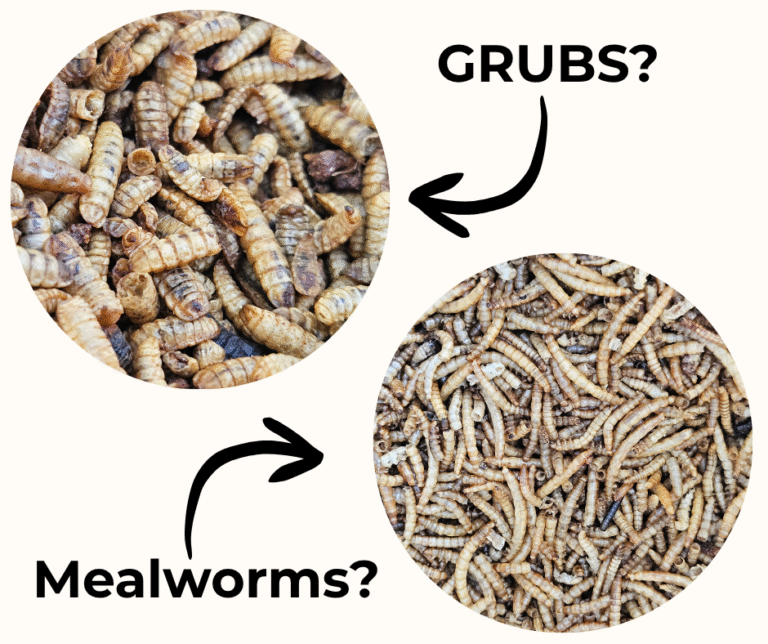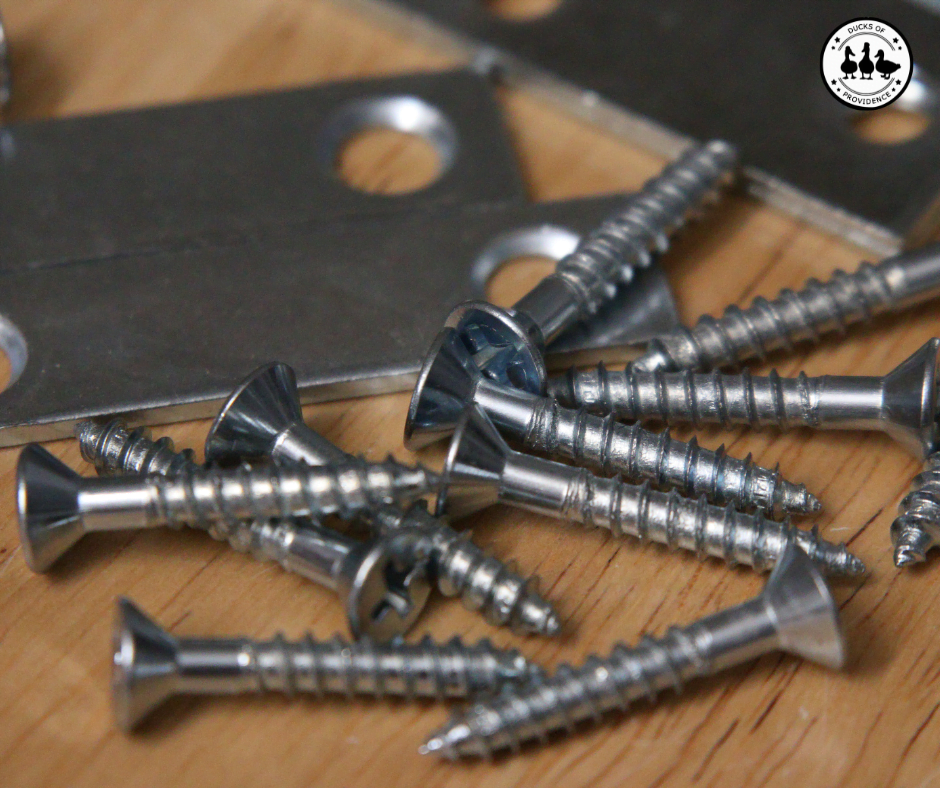
Understanding Metal Poisoning in Ducks: Causes, Symptoms, and Prevention
Metal poisoning in ducks is a serious issue that can lead to severe health problems and even death. Ducks are curious creatures that love to forage, often picking up shiny objects that might contain harmful metals. In this post, we’ll explore the common causes of metal poisoning in ducks, the symptoms to watch for, and how you can prevent it to keep your feathered friends safe.
Disclaimer: I may earn a commission if you buy products or services through my affiliate links. This will not affect the price you pay. I only recommend products or services that I believe will benefit my readers.
What is Metal Poisoning?
Metal poisoning in ducks, also known as heavy metal toxicity, occurs when ducks ingest toxic metals that accumulate in their bodies over time, leading to harmful effects on their health. Unlike organic compounds, which can be broken down or excreted, metals tend to persist in the body, gradually building up to dangerous levels. Ducks, with their natural foraging instincts and curious nature, are particularly susceptible to accidentally ingesting these metals from their environment.
Heavy metals like lead, zinc, and copper are the most common culprits. These metals can be found in everyday items that ducks might come into contact with, such as old paint chips, discarded batteries, or even the soil in certain areas. When ingested, these metals enter the duck’s bloodstream and are distributed to various organs, including the liver, kidneys, and nervous system. Over time, this accumulation disrupts normal cellular functions, leading to symptoms ranging from mild discomfort to severe illness and, in extreme cases, death.
One of the challenges with metal poisoning in ducks is that the symptoms often develop slowly and may not be immediately noticeable. This gradual onset makes it difficult for duck keepers to recognize the problem until the poisoning has reached a critical stage. Additionally, the symptoms of metal poisoning can be nonspecific, mimicking other common duck illnesses, which further complicates diagnosis.
Lead poisoning, for instance, is one of the most severe forms of metal toxicity in ducks. Lead can disrupt the production of red blood cells, leading to anemia, and can cause neurological damage, resulting in tremors, seizures, and paralysis. Zinc poisoning, often linked to the ingestion of galvanized metal objects, can damage the gastrointestinal tract and impair the liver and pancreas. Copper toxicity, though less common, can lead to liver damage and hemolysis, where red blood cells break down prematurely.
While ducks have the ability to vomit, this is not a reliable defense mechanism against metal poisoning, as the ingested metals can still pass through the gastrointestinal system and be absorbed into the bloodstream. This makes it all the more important for duck keepers to be vigilant about potential sources of toxic metals in their environment and to act quickly if they suspect their ducks may have been exposed.
Understanding the nature of metal poisoning is essential for prevention and early detection. By being aware of the risks and taking proactive measures to safeguard your ducks’ environment, you can help prevent these toxic metals from harming your feathered friends.
Common Sources of Metal Poisoning
Understanding where your ducks might encounter harmful metals is key to preventing poisoning. Ducks are naturally curious and will peck at or ingest objects that catch their attention, including those that may be hazardous. Here’s a closer look at the most common sources of metal poisoning:
Lead
Lead poisoning is one of the most common and dangerous forms of metal toxicity in ducks. Here are some common sources:
- Old Paint: Houses built before 1978 often contain lead-based paint. Peeling paint chips can fall into areas where ducks forage, making it easy for them to ingest.
- Fishing Weights: Lead sinkers and weights are often lost in ponds, lakes, or streams where ducks might forage. Ducks can mistake these small, shiny objects for food.
- Ammunition and Shotgun Pellets: Lead-based ammunition used in hunting can contaminate water sources and nearby soil. Ducks can ingest these pellets directly or by eating contaminated vegetation or prey.
- Plumbing Materials: Older plumbing systems may contain lead pipes or lead solder, which can leach into water sources that ducks have access to. Even small amounts of lead in water can be harmful over time.
Zinc
Zinc is another common metal that can be toxic to ducks when ingested in large quantities. Sources include:
- Galvanized Metal: Zinc is used in the galvanization process to prevent rusting in metal objects like hardware cloth, fencing, and some roofing materials. Ducks may peck at or ingest small pieces of these materials, especially if they’re old or corroded.
- Pennies: In the United States, pennies minted after 1982 are made primarily of zinc. If a duck swallows a penny, the zinc can quickly dissolve in their stomach acid, leading to toxicity.
- Screws, Bolts, and Nails: Many fasteners are coated with zinc to prevent rust. Ducks might ingest these small items if they come loose in their environment, especially if they’re attracted to shiny objects.
Copper
Though less commonly encountered, copper can still pose a risk to ducks. Potential sources include:
- Old Pipes: Copper pipes, often used in older homes and buildings, can corrode over time. If these pipes are used in water systems accessible to ducks, small amounts of copper can leach into the water.
- Electrical Wires: Copper is a primary material in electrical wiring. If ducks come into contact with exposed wires, either through foraging or by being housed near areas under construction, they may be at risk of copper ingestion.
- Fungicides: Some fungicides and agricultural products contain copper compounds. If ducks forage in areas where these products have been used, they might ingest copper-contaminated soil or vegetation.
Other Potential Sources
- Batteries: Old or discarded batteries can leak heavy metals like lead, zinc, and cadmium. Ducks might find these batteries in landfills, dumps, or even in areas where electronic waste is improperly disposed of.
- Contaminated Soil: Industrial areas or farmlands treated with certain chemicals may have soils contaminated with heavy metals. Ducks that forage in these areas can ingest harmful levels of metals through the soil or plants growing in it.
- Household Items: Items like jewelry, coins, or small metal toys can be easily overlooked but pose a significant risk if they end up in a duck’s environment. Ducks might mistake these objects for food, leading to accidental ingestion.

Symptoms of Metal Poisoning in Ducks
Detecting metal poisoning in ducks can be challenging, as the symptoms often develop gradually and can easily be mistaken for other common illnesses. However, recognizing the signs early on is crucial for effective treatment and recovery. Here’s a more detailed look at the symptoms associated with the most common types of metal poisoning in ducks:
General Symptoms
Regardless of the type of metal involved, ducks suffering from metal poisoning may exhibit a range of general symptoms, including:
- Lethargy: Affected ducks may become unusually tired, spending more time resting and less time foraging or swimming. This is often one of the earliest signs of metal poisoning.
- Weakness: You may notice your duck struggling to walk or stand, with drooping wings or a staggering gait. This weakness is due to the toxic effects of metals on the duck’s muscles and nervous system.
- Weight Loss: Despite eating normally, ducks with metal poisoning may lose weight as their bodies struggle to absorb nutrients. Weight loss may be gradual or sudden, depending on the severity of the poisoning.
- Loss of Appetite: Ducks may show a reduced interest in food, leading to further weight loss and weakness. This is particularly concerning in ducks, as they generally have a strong appetite.
- Increased Thirst: Metal toxicity can cause excessive thirst, leading to increased water consumption. This is often accompanied by frequent urination.
- Vomiting and Regurgitation: Ducks may vomit or regurgitate food and water as their bodies try to expel the toxic substances. Vomiting is less common but can occur, especially in severe cases.
- Diarrhea: Metal poisoning often leads to digestive upset, resulting in watery, greenish, or blackish diarrhea. The color may vary depending on the type of metal ingested.
Specific Symptoms by Metal Type
In addition to the general symptoms, certain metals cause specific signs of poisoning:
Lead Poisoning
Lead poisoning is particularly dangerous and can result in severe neurological and gastrointestinal symptoms:
- Neurological Signs: Ducks with lead poisoning may exhibit tremors, seizures, and muscle spasms. In advanced cases, paralysis can occur, affecting the wings, legs, or neck.
- Anemia: Lead disrupts the production of red blood cells, leading to anemia. Symptoms include pale mucous membranes, lethargy, and weakness.
- Respiratory Distress: As lead accumulates in the body, it can cause difficulty breathing, with ducks showing signs of labored breathing or open-mouth breathing.
- Blindness or Vision Problems: Lead can also affect the optic nerves, leading to partial or complete blindness in severe cases.
Zinc Poisoning
Zinc toxicity, often caused by the ingestion of galvanized metal objects, primarily affects the gastrointestinal system and liver:
- Vomiting and Regurgitation: While vomiting is not common in all cases of metal poisoning, it is more frequently observed in zinc poisoning as the body attempts to expel the metal.
- Gastrointestinal Pain: Ducks may show signs of abdominal discomfort, such as reluctance to move or pecking at their abdomen.
- Liver Damage: Prolonged exposure to high levels of zinc can lead to liver damage, resulting in jaundice (yellowing of the skin or mucous membranes) and dark, discolored droppings.
- Pancreatic Issues: Zinc poisoning can impair pancreatic function, leading to digestive issues and further weight loss.
Copper Poisoning
Copper toxicity is less common but can still cause significant harm, particularly to the liver and blood:
- Hemolysis: Copper poisoning can lead to the breakdown of red blood cells (hemolysis), causing anemia, weakness, and pale mucous membranes.
- Jaundice: Similar to zinc poisoning, copper toxicity can cause jaundice due to liver damage. This may be evident in the skin or the whites of the eyes.
- Gastrointestinal Distress: Ducks with copper poisoning may experience severe digestive upset, including vomiting, diarrhea, and a swollen abdomen.
Behavioral Changes
In addition to physical symptoms, metal poisoning can lead to noticeable changes in a duck’s behavior:
- Depression: Affected ducks may appear unusually subdued, avoiding interaction with other ducks or their keepers. They may isolate themselves from the flock.
- Aggression or Irritability: Some ducks may become unusually aggressive or irritable, possibly due to discomfort or neurological effects.
- Feather Plucking: Ducks experiencing metal toxicity may start plucking or chewing at their feathers, particularly around the wings and chest.
Pro Tip: Monitor Your Ducks Closely
Because the symptoms of metal poisoning can be subtle and develop gradually, it’s important to monitor your ducks closely for any signs of illness. Keep a daily log of their behavior, appetite, and physical condition. If you notice any unusual symptoms, consult a veterinarian immediately for diagnosis and treatment.

Prevention of Metal Poisoning in Ducks
Preventing metal poisoning in ducks involves proactive measures to ensure their environment is free of toxic metals and that they are not exposed to potential hazards. By taking these steps, you can greatly reduce the risk of metal toxicity and keep your ducks healthy and safe. Here’s an expanded look at the best practices for preventing metal poisoning:
Regular Inspection of the Duck’s Environment
One of the most effective ways to prevent metal poisoning is by regularly inspecting the areas where your ducks live and forage:
- Check for Hazardous Materials: Routinely inspect your duck’s living area for items that could pose a risk, such as old paint chips, discarded metal objects, or construction debris. Pay special attention to areas where your ducks like to forage, as they are more likely to encounter toxic metals there.
- Remove Loose Objects: Collect and remove any loose nails, screws, washers, or other small metal objects that could be ingested. Even small items can be dangerous if swallowed, especially if they contain zinc or lead.
- Secure Fencing and Enclosures: Ensure that all fencing, wire mesh, and other metal enclosures are in good condition and not corroding. Replace any rusty or damaged sections to prevent your ducks from pecking at or ingesting metal fragments.
Use Safe Materials
Choosing the right materials for your duck’s housing, feeders, and other equipment is crucial in preventing metal poisoning:
- Avoid Galvanized Metals: Galvanized metal, which is coated with zinc, should be avoided in areas where ducks might peck or ingest it. Opt for materials like stainless steel or plastic for feeders, waterers, and other items that ducks come into contact with.
- Lead-Free Paint: If you’re painting or refurbishing duck houses or fences, use lead-free paint. Old structures with lead-based paint should be properly sealed or stripped to prevent ducks from ingesting peeling paint chips.
- Non-Metallic Feeding Equipment: Consider using non-metallic feeding bowls and equipment to further reduce the risk of metal ingestion. High-quality plastic or rubber bowls are safer alternatives.
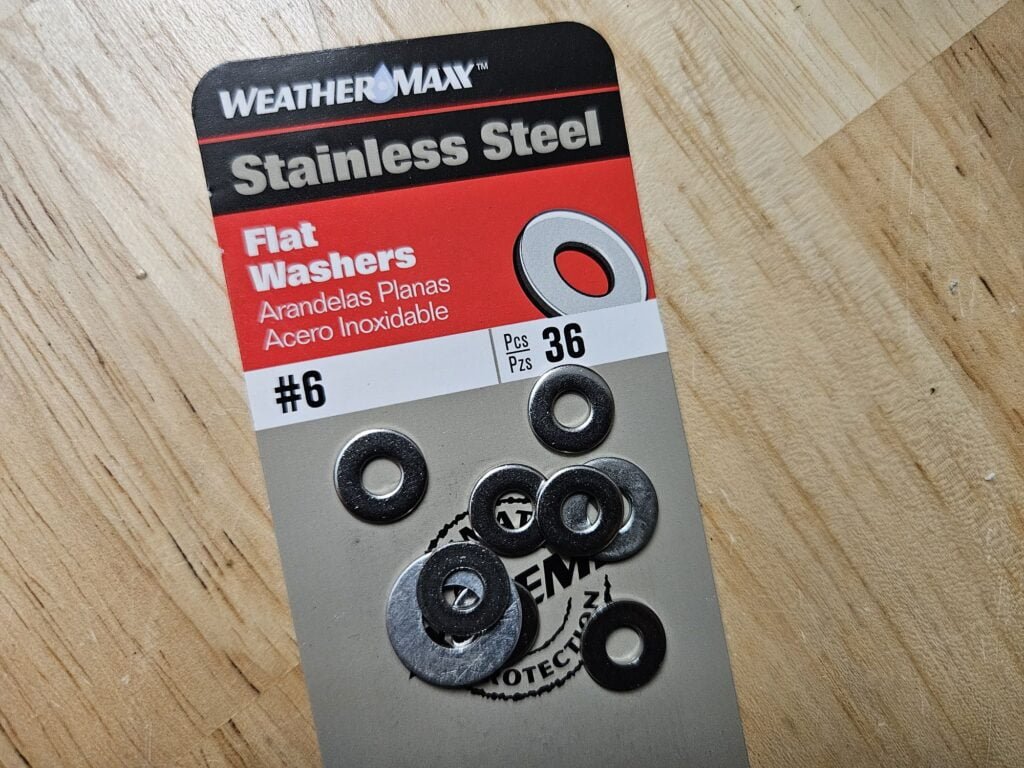
Proper Waste Management
Disposing of hazardous waste properly can help prevent accidental exposure to toxic metals:
- Safely Dispose of Batteries: Batteries contain heavy metals like lead, zinc, and cadmium, which can be harmful if ingested. Dispose of old batteries at designated recycling centers, and ensure that they are kept out of your ducks’ reach.
- Remove Old Electronics and Appliances: Old electronics and appliances can contain harmful metals. Make sure these items are disposed of properly, away from your duck’s living area.
- Manage Soil Contamination: If you suspect that the soil in your duck’s foraging area might be contaminated with heavy metals, consider having it tested. Soil testing can identify potential hazards, allowing you to take steps to remediate the area or restrict access to contaminated sections.
Provide a Safe Foraging Area
Ensuring that your ducks have a safe place to forage is essential for preventing accidental ingestion of toxic metals:
- Create a Clean Foraging Zone: Designate a specific area for your ducks to forage that you regularly monitor and maintain. Keep this area free from potential contaminants like old tools, metal objects, or debris.
- Use Clean Fill Material: If you need to bring in soil, sand, or gravel for your ducks’ foraging area, ensure it is free from contaminants. Ask suppliers about the source of their materials and whether they’ve been tested for heavy metals.
- Plant Safe Vegetation: If you plant vegetation in your duck’s foraging area, choose plants that are known to thrive in clean soil and are not prone to accumulating heavy metals. Some plants can uptake metals from contaminated soil, so it’s important to ensure the soil is safe.
Regular Vet Check-Ups
Early detection is key in preventing serious health issues related to metal poisoning:
- Annual Health Checks: Schedule regular veterinary check-ups for your ducks, ideally once a year. A vet can conduct blood tests and other diagnostics to check for signs of metal poisoning, even if your ducks appear healthy.
- Monitor for Symptoms: Keep a close eye on your ducks for any symptoms of metal poisoning, such as lethargy, weight loss, or changes in behavior. Early intervention can make a significant difference in treatment outcomes.
Education and Awareness
Being informed and educating others about the dangers of metal poisoning is crucial for prevention:
- Learn About Local Hazards: Understand the history of your land and local area. Areas with a history of industrial use, mining, or farming with certain chemicals may have higher levels of soil contamination.
- Educate Your Community: Share information with other duck keepers and your local community about the risks of metal poisoning and the importance of safe practices. Community awareness can help prevent accidents and improve overall safety for domestic animals.
Pro Tip: Collecting Metals with a Rolling Magnet
To further safeguard your ducks, consider using a rolling magnet to scan their foraging area regularly for metal objects. Rolling magnets, commonly used in construction to pick up stray nails, can effectively collect small metal items like screws, nails, and shavings that might otherwise go unnoticed. This simple tool can be an invaluable addition to your routine yard maintenance, significantly reducing the risk of metal poisoning.
Water Safety and Testing for Metal Poisoning Prevention
Water is essential for ducks, not just for drinking but also for bathing and foraging. However, contaminated water can be a significant source of metal poisoning. Ensuring that your ducks have access to clean, safe water is a key aspect of preventing metal toxicity. Here’s how to manage water safety and testing to protect your flock:
Importance of Clean Water
Ducks spend a lot of time in and around water, so it’s crucial that the water they drink and bathe in is free from harmful contaminants:
- Drinking Water: Ducks need access to fresh, clean water for drinking at all times. Contaminated water can lead to ingestion of toxic metals like lead, zinc, or copper, which can accumulate in their bodies over time.
- Bathing and Foraging Water: Ducks also need clean water for bathing and foraging. Dirty or polluted water can harbor metal particles, which may be ingested when ducks dip their beaks, preen, or forage for food.
Potential Sources of Water Contamination
Several factors can contribute to metal contamination in water:
- Old Plumbing Systems: Lead pipes, old plumbing fixtures, or galvanized pipes can leach metals into water supplies. If your duck’s water comes from an older plumbing system, it’s essential to check for metal contamination.
- Runoff from Contaminated Soil: Water sources that come into contact with contaminated soil, such as through runoff from rain, can carry metals like lead, cadmium, or arsenic. This is especially a concern if your ducks have access to natural ponds, streams, or wells.
- Industrial Pollution: Water sources near industrial areas may be at risk of contamination from nearby factories, mines, or agricultural runoff containing pesticides and fertilizers that could carry heavy metals.
Water Testing
Regular water testing is crucial to ensure the water your ducks drink and bathe in is safe and free from toxic metals:
- When to Test: Test your water at least once or twice a year, or more frequently if you notice any changes in your water source or if your ducks exhibit symptoms of metal poisoning. Testing is especially important if your water comes from a well, natural pond, or an older municipal system.
- What to Test For: Water testing should check for common metals such as lead, zinc, copper, arsenic, and cadmium. You can purchase water testing kits that allow you to collect samples and send them to a lab for analysis.
- Professional Testing: For the most accurate results, consider hiring a professional to conduct a comprehensive water quality test. Professionals can identify a wide range of contaminants and provide detailed reports on the safety of your water.
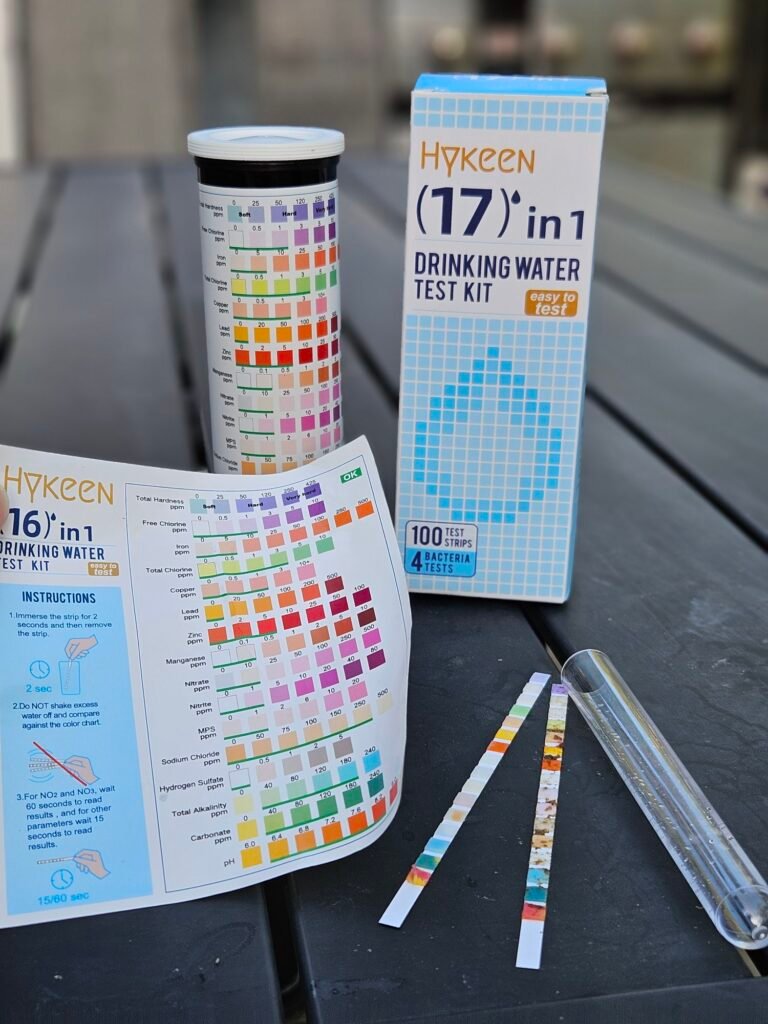
Interpreting Water Test Results
Understanding your water test results is important for taking the right action:
- Safe Levels: Test results will indicate the concentration of various metals in your water. Each metal has a “safe” level, often set by regulatory agencies like the EPA. If metal concentrations are above these safe levels, immediate action is required.
- What to Do if Metals Are Detected: If your water tests positive for toxic metals, you’ll need to find an alternative water source or treat the contaminated water. In severe cases, consider installing water filtration systems designed to remove specific metals, such as reverse osmosis systems or activated carbon filters.
Water Filtration and Treatment Options
If testing reveals contamination, several treatment options can help ensure your ducks have access to safe water:
- Filtration Systems: Install a water filtration system to remove metals from your duck’s water supply. Systems like reverse osmosis are particularly effective at removing a wide range of contaminants, including heavy metals.
- Water Softeners: If your water has high levels of dissolved metals, a water softener can help reduce mineral content, although this is usually more effective for minerals like calcium and magnesium rather than toxic metals.
- Regular Maintenance: Ensure that any filtration or treatment systems you install are properly maintained. Filters need to be replaced regularly to ensure they continue to function effectively.
Pro Tip: Test Before You Treat
Before treating your water, always test it first to determine the specific metals present and their concentrations. This ensures that you choose the most effective treatment method and don’t waste resources on unnecessary or ineffective solutions.
Treatment Options for Metal Poisoning in Ducks
If you suspect that one of your ducks has been exposed to toxic metals, immediate veterinary care is crucial. Metal poisoning can be life-threatening, and the sooner treatment begins, the better the chances of recovery. Here’s an in-depth look at the treatment options available for ducks suffering from metal poisoning:
Immediate Veterinary Intervention
The first step in treating metal poisoning is to seek veterinary assistance as soon as possible. A vet will conduct a thorough examination and may perform several diagnostic tests:
- Blood Tests: Blood tests are essential to determine the type and concentration of metals in your duck’s system. High levels of metals like lead, zinc, or copper in the blood are a clear indication of poisoning.
- Radiographs (X-rays): X-rays can help identify ingested metal objects within the duck’s digestive tract. This imaging technique allows the vet to locate and assess the size and position of the metal.
- Fecal Analysis: A fecal analysis may be conducted to check for the presence of metal fragments or abnormalities that indicate metal poisoning.
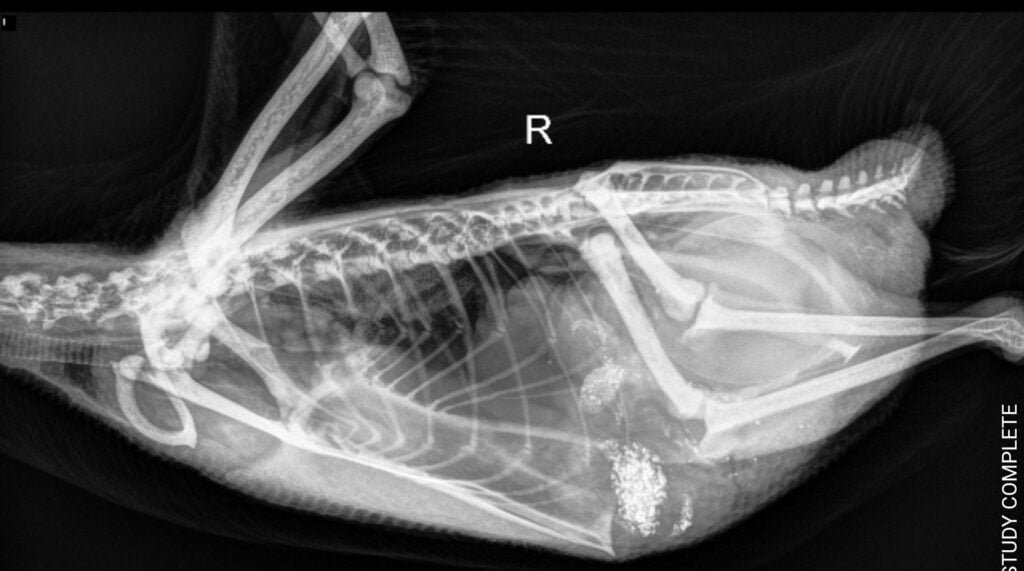
Chelation Therapy
Chelation therapy is one of the most common and effective treatments for metal poisoning in ducks:
- How It Works: Chelation therapy involves administering a chelating agent, a substance that binds to the toxic metal in the bloodstream, allowing it to be excreted from the body through the urine. The most commonly used chelating agents include calcium EDTA (ethylene diamine tetraacetic acid) and DMSA (dimercaptosuccinic acid).
- Administration: The chelating agent is typically administered via injection or orally, depending on the severity of the poisoning and the type of metal involved. The treatment is often repeated over several days or weeks until the metal levels in the blood are reduced to safe levels.
- Effectiveness: Chelation therapy is highly effective in reducing metal levels in the body, but it requires careful monitoring by a vet to avoid potential side effects such as kidney damage or electrolyte imbalances.
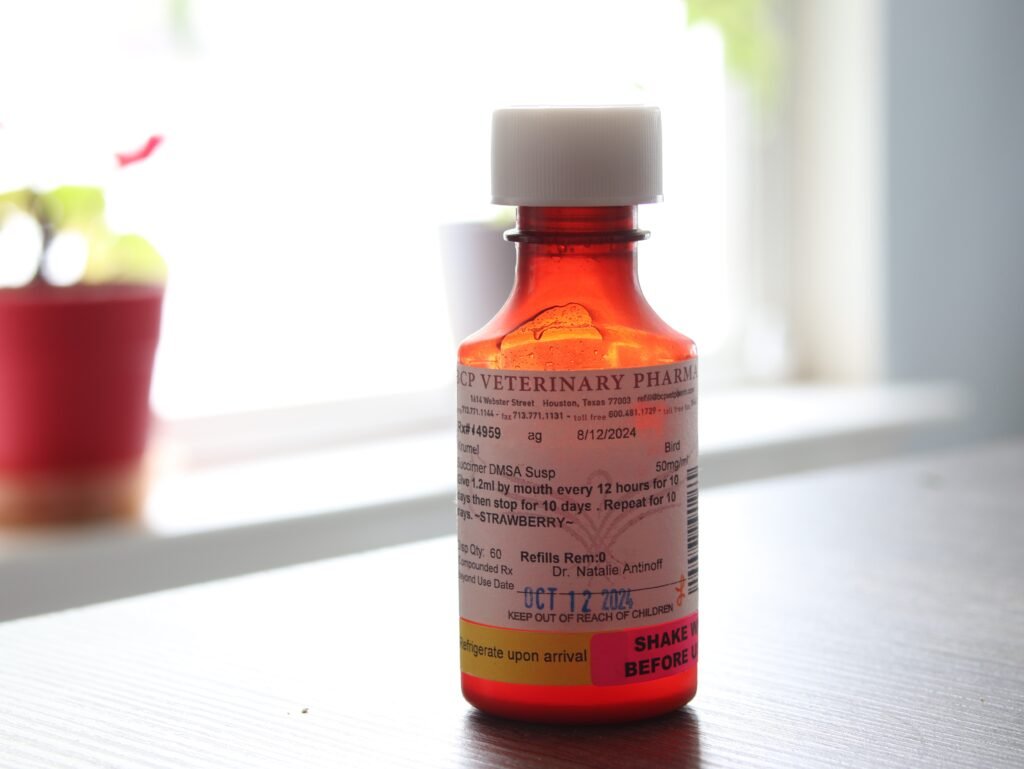
Gastrointestinal Decontamination
If metal objects are present in the duck’s digestive tract, gastrointestinal decontamination may be necessary to remove them:
- Endoscopy: In some cases, an endoscopy may be performed to remove the metal objects. This procedure involves using a flexible tube with a camera and tools to locate and retrieve the metal without the need for invasive surgery. Endoscopy is less stressful for the duck and usually has a quicker recovery time.
- Surgery: If the metal object is too large or difficult to remove with an endoscope, surgery may be required. This is typically a last resort due to the risks associated with anesthesia and surgery, but it can be lifesaving if other methods fail.
Supportive Care
Supportive care is essential in helping your duck recover from metal poisoning, especially if the poisoning has caused significant harm:
- Fluids and Electrolytes: Ducks with metal poisoning are often dehydrated and may have imbalanced electrolytes due to vomiting, diarrhea, or increased urination. Administering fluids and electrolytes, either orally or intravenously, helps rehydrate the duck and restore balance to their system.
- Nutritional Support: Proper nutrition is critical during recovery. If your duck is not eating well on its own, you may need to provide supplemental feeding with a high-quality, easily digestible diet. Nutritional support can include soft foods, vitamin supplements, and, in severe cases, tube feeding.
- Pain Management: If your duck is experiencing pain due to metal poisoning, such as from gastrointestinal discomfort or neurological effects, your vet may prescribe pain relief medication to keep your duck comfortable during treatment.
- Monitoring and Observation: After initial treatment, your duck will need to be closely monitored for signs of improvement or relapse. This includes regular check-ups with the vet, ongoing blood tests to monitor metal levels, and careful observation of your duck’s behavior and condition at home.
Long-Term Care and Rehabilitation
Recovery from metal poisoning can take time, and long-term care may be required to ensure your duck fully regains its health:
- Rehabilitation Programs: Depending on the severity of the poisoning, your duck may benefit from a rehabilitation program that includes physical therapy, dietary adjustments, and environmental modifications to reduce stress and promote healing.
- Environmental Adjustments: If the metal poisoning was caused by an environmental hazard, it’s crucial to address and eliminate the source of the metal to prevent future incidents. This might involve replacing or removing contaminated materials, improving the duck’s living conditions, or restricting access to certain areas.
- Ongoing Veterinary Care: Continued veterinary care is important to monitor your duck’s recovery. This may include follow-up blood tests, x-rays, and regular health check-ups to ensure no lingering effects from the poisoning.
Preventative Measures Post-Recovery
Once your duck has recovered, it’s important to take steps to prevent future cases of metal poisoning:
- Review and Improve Safety Protocols: Assess your current safety measures and make any necessary improvements. This could involve enhancing your cleaning routines, reinforcing secure storage of hazardous materials, or upgrading your duck’s housing and foraging areas.
- Education and Training: Educate yourself and any caregivers on the signs of metal poisoning, proper handling of potential hazards, and how to maintain a safe environment for your ducks. Awareness is key to early detection and prevention.
Pro Tip: Act Fast and Stay Calm
If you suspect your duck has ingested a metal object or is showing signs of metal poisoning, time is of the essence. Act quickly by isolating the affected duck to prevent further ingestion and immediately contact a vet. Staying calm and focused will help you manage the situation effectively, ensuring the best possible outcome for your duck.
Krümel’s Battle with Metal Poisoning
Our beloved duck, Krümel, has always been a bundle of joy in our flock. Her lively personality and gentle quacks have brightened our days. However, we faced a challenging and concerning time when Krümel began to show signs of reproductive issues. Her health took an unexpected turn, prompting us to seek veterinary care.
The Vet Visit
When Krümel’s condition worsened, we knew we had to act fast. The vet conducted a thorough examination and decided to take blood samples to diagnose the problem. The results were alarming. Krümel’s pancreatic levels were off, indicating potential issues with her digestion and metabolism. Additionally, her white blood cell count was elevated, suggesting inflammation or infection. Most concerning of all were her zinc levels, which were much too high.

A Path Forward
The vet’s findings pointed to metal poisoning as a likely cause of the elevated zinc levels. Though Krümel didn’t exhibit traditional signs of metal poisoning like lethargy or gastrointestinal distress, the high zinc levels were a red flag. We went on a treatment plan to address the issue:
- Antibiotics: Krümel was prescribed antibiotics for three weeks to combat any potential infection and inflammation contributing to her condition.
- Chelation Therapy: The primary treatment involved chelation therapy. Krümel received chelating agents in three rounds, each lasting 10 days, with 10-day breaks in between. Chelation therapy helps bind and remove excess metals from the body, and it was our best hope for reducing her zinc levels.
Unraveling the Mystery
Despite our efforts, we faced a frustrating mystery. X-rays did not reveal any metal objects in Krümel’s digestive tract, leaving us puzzled about the source of her high zinc levels. We suspect that she may have ingested something containing zinc or another metal, but we couldn’t pinpoint the exact cause.
Krümel’s Recovery
Krümel’s resilience shone through during her treatment. We carefully monitored her progress and provided her with all the supportive care she needed. After completing her course of antibiotics and chelation therapy, we were relieved to see her gradually improve. Her zinc levels began to stabilize, and she regained her usual energy and enthusiasm.
Though we never discovered the exact source of the contamination, Krümel’s recovery was a testament to the effectiveness of timely intervention and treatment. Her journey reminded us of the importance of vigilance in duck care and the need for regular health checks to catch and address issues early.
Krümel is back to her playful self, and we keep a close eye on her and the rest of the flock to ensure their environment remains safe and free from potential hazards. Her story is a reminder of the unexpected challenges of duck keeping and the joy and relief that come with overcoming them. Read her full story in this post: ➡️Krümel’s Health Journey (Case Study)
Guarding Against Metal Poisoning: Essential Tips for Duck Safety
Ensuring your ducks are safe from metal poisoning involves several crucial steps. Here’s a streamlined guide to help you protect your flock:
Understanding Metal Poisoning
- What It Is: Toxic metal exposure can cause serious health issues in ducks, including neurological and gastrointestinal problems.
- Symptoms: Watch for lethargy, weight loss, and changes in behavior.
Common Sources of Contamination
- Hazardous Waste: Old paint, discarded metal objects, and industrial debris.
- Water Sources: Contaminated soil runoff, old plumbing systems, and industrial pollution.
Treatment Options
- Veterinary Care: Immediate vet intervention is crucial. Treatment may include chelation therapy, endoscopy, or surgery.
- Supportive Care: Fluids, nutrition, and pain management support recovery.
Prevention Strategies
- Environment Checks: Regularly inspect and clean your duck’s living area. Remove metal hazards and maintain secure enclosures.
- Safe Materials: Use non-metallic or lead-free materials for housing and feeding.
- Water Safety: Test water for metal contamination and use filtration systems if necessary.
Water Testing and Treatment
- Regular Testing: Test water sources for metals annually or if contamination is suspected.
- Effective Filtration: Install appropriate filtration systems to remove contaminants.
By taking these steps, you can significantly reduce the risk of metal poisoning and ensure a safe, healthy environment for your ducks. Stay vigilant, act quickly, and your ducks will thrive.
Have you encountered metal poisoning in your flock? Share your experiences and tips in the comments below to help other duck keepers stay informed and prepared! ⬇️


